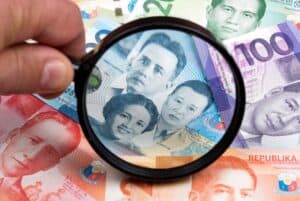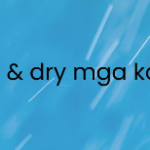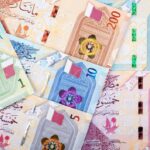Do you recognize them?
They must be now in your possession or unavoidably coming soon. Last year, there was a noticeable increase in the circulation of counterfeit currency. In particular, from January to September, the Bangko Sentral ng Pilipinas (BSP) recovered P480,000 in counterfeit currency.
If this occurs to you, it is undoubtedly frustrating. Making the distinction between fake and real money is therefore the best defense against falling for the con artists’ tricks. Well, the BSP is making every effort to stop the use of counterfeit money, but what are the possibilities that you’ll accept it?
In particular, if you have the means to destroy it, oblivion is not an acceptable defense. As a result, we have provided you with a list of numerous resources you can use to learn how to spot phony currency and what to do if you do.
Please read: Peso over a dollar in the midst of the covid-19 pandemic?
How to Spot Fake Money in the Philippines vs. Real Money
The FEEL, LOOK, and TILT inspection approach was developed by the BSP.
Below are two more helpful hints in addition to this approach.
Look
How can you distinguish between genuine and counterfeit currency? By examining the distinctive visual characteristics of a note, you can distinguish between real money and counterfeit currency. What you need to check is as follows:
- The “apparition” of the faces shown on the bill is known as the watermark. These shadow images can be seen on the right side of the note if you hold it up to the light.
- On the front and reverse of the note, there are a number of thin yet distinct lines that are called “security fibers.” They ought to be offered in blue and red.
- The note’s asymmetrical serial number may be found on the lower left and upper right sides. This needs to have six to seven numbers and one to two prefix letters. The typeface gets bigger and thicker.
- See-Through Mark: On the note, there is a truncated Babaylan script in the lower right corner. The abbreviated portion will be visible if you hold the money up to the light, showing the complete script. The script in question is PILIPINO.
Feel
To authenticate a note, you should be able to feel its tactile markings.
- Security Paper – Since abaca fiber makes up the majority of the Philippine banknote, it should have a distinctive feel. It shouldn’t be very smooth and silky.
- Embossed Prints: Because the note is embossed, its surface has a range of textures.
- Tactile Marks – Tactile marks are a few pairs of parallel lines on either side of a bill that help people with vision impairment recognize and distinguish between different bills. Additionally, these marks serve as evidence that your note is authentic.
Tilt
By tilting your money, you can continue your visual examination. This will make aspects visible that aren’t present on false notes.
- Security Thread: This is the vertical line that spans the width of smaller bills, such as $20 and $50. When you hold up your bill to the light, you can see this line. For larger notes like 100, 200, 500, and 1,000, the line is represented by a sequence of metallic dashes with the text “BSP” and the value of the note.
- Hidden Numerical Value – On the bill, you can see a scaled-down representation of the portrait in the upper right corner. The value of the money will be seen over the portrait if you tilt the note at a 45-degree angle.
- Optically Variable Ink (for 1,000 notes): The value of the money printed on the note’s lower right corner should not only be embossed, but its color should also change from green to blue depending on the angle at which you look at it. This characteristic is absent from a counterfeit 1000 peso bill.
- Optically Variable Device Patch (for 500 and 1,000 note denominations) – The portrait of the note’s reflecting foil bears a covert optical hint. Tilt your 500 peso bill to see if it’s fake or not. A picture of the Blue-naped parrot will appear. You’ll see a picture of a clam holding a South Sea pearl on the 1,000 note.
- For newer notes, the numerical value on the left side of the bill should have a color-shifting effect. This is known as the enhanced value panel (for 500 and 1,000 notes).
Attempt to damage the bill
Put some water on the paper banknote. It may be a sign that the money you have is fake if the bill starts to tear and the color smears. Keep in mind that since the notes aren’t composed of regular paper, they shouldn’t deteriorate even if they get wet.
Additionally, try to scrape the banknote. If the printing blurs or shows indications of degeneration, it can be a fake.
Consider the Changes in Design
The BSP occasionally introduces new money designs. You should pay close attention to the new components and features of the notes in every release.
For instance, the Philippine Eagle is featured on the $1,000 note’s 2022 design rather than the nation’s World War II Heroes. If you receive a 1,000 note with the Philippine Eagle that isn’t printed on polymer, it’s probably a fake bill. This new design is a part of the polymer or plastic bills that run alongside the current 1,000-peso paper banknotes.
Conclusion
People still rely on physical money despite the rise of digital transactions and cryptocurrencies. Because of this, there is always a potential that you will get fake money.
Understanding the difference between fake and real money will help you avoid falling victim to con artists and scammers. Truth be told, it takes a lot of time and effort to examine every banknote that you come across.
However, it will be worthwhile, and having peace of mind is indescribably valuable. Additionally, every time you do a cash transaction, your confidence will increase.





